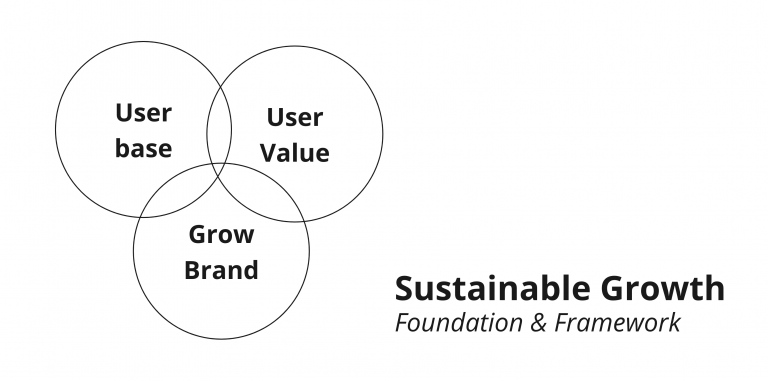A strong brand personality can achieve lasting impressions, help foster the brand / customer relationship and loyalty, and it sets the brand apart from competitors and the general noise.
In this post, I will explore the essential ingredients and approaches for developing a brand’s tone of voice (TOV).
Understanding Tone of Voice
2.1 What is Tone of Voice?
Tone of voice (TOV) refers to the personality and style of communication used by a brand.
A TOV encompasses words, language, and writing style employed across various brand touchpoints, including marketing collateral, website content, social media posts, and customer support interactions.
A well-crafted tone of voice enables your brand to convey its values, establish emotional connections, and consistently communicate its unique selling points.
2.2 The Importance of Tone of Voice
Developing a consistent tone of voice is crucial for several reasons:
2.2.1 Brand Differentiation
There’s a lot of noise and it is essential for your brand to stand out. A distinct tone of voice helps differentiate your brand from competitors and positions you as a unique and memorable choice in the minds of consumers.
2.2.2 Emotional Connection
By establishing a consistent TOV, you can evoke specific emotions and connect with your audience on a deeper level. Emotionally engaged customers are more likely to develop brand loyalty and advocate for your products or services. Simon Sinek’s 2009 TED talk on the ‘Why’ and his Golden Circle provided the shift for brands towards connecting on a deeper level and effectively move from the old broadcast marketing approach towards creating a dialogue with your target audience.
2.2.3 Clarity and Consistency
A well-defined tone of voice ensures consistent messaging across all channels and touchpoints.
This consistency enhances brand recognition, reinforces key brand messages, and fosters trust among your audience.

Developing Your Tone of Voice
3.1 Know Your Brand Identity
To develop an effective tone of voice, you must first have a clear understanding of your brand’s identity.
Start by defining your brand values, mission statement, and target audience. Consider the personality traits that align with your brand, such as being authoritative, friendly, or playful.
3.2 Define Your Tone of Voice Guidelines
Once you have a solid understanding of your brand identity, next you want to define your tone of voice guidelines.
These guidelines serve as a reference for anyone creating content on behalf of your brand, ensuring a consistent tone across all communication channels. Some of the key elements to consider when defining your guidelines include:
3.2.1 Language and Vocabulary
Determine the language and vocabulary that align with your brand persona. Consider the tone (formal, informal, or conversational) and the level of sophistication or simplicity appropriate for your target audience.
3.2.2 Writing Style and Grammar
Decide on the preferred writing style and grammar conventions for your brand.
Consider whether you want to use contractions, sentence structures, or specific punctuation to create a unique voice. This aspect of your tone of voice will greatly influence how your brand is perceived by your audience.
For example, a brand targeting a younger demographic may choose to use a more informal and conversational writing style, incorporating contractions and shorter sentences. On the other hand, a brand targeting a professional audience may opt for a more formal tone, using complete sentences and a polished writing style.
3.2.3 Brand Voice Attributes
Identify the key attributes that define your brand voice. These attributes should align with your brand’s personality and values. Are you humorous, empathetic, or authoritative?
By clearly defining these attributes, you provide content creators with a framework for shaping the brand’s voice consistently.
Consider creating a brand voice chart or document that outlines specific adjectives and examples of how each attribute should be expressed in your content. This helps maintain clarity and consistency across different teams and content creators.
3.3 Tailor Your Tone for Different Channels
While your brand’s TOV should remain consistent, it’s important to adapt it slightly to fit the nuances of different communication channels.
Each channel has its own set of expectations and norms, and tailoring your tone accordingly ensures that your brand’s voice resonates with the specific audience on that platform.
For instance, your tone on certain social media platforms may be more relaxed, conversational, and even playful, allowing you to engage with your audience in a friendly and approachable manner.
In contrast, your tone in formal business communications, such as email newsletters or official statements, may require a more professional and authoritative approach.
For example when targeting different user segments or on an online marketplace platform your TOV might need to be different for your supply and demand sides.
Adapting your tone to different channels doesn’t mean changing your brand’s personality; it simply involves understanding the context and adjusting the tone to suit the platform while maintaining a consistent brand identity.
Implementing Your Tone of Voice
4.1 Internal Alignment
To ensure consistency, it’s crucial to communicate your tone of voice guidelines to all stakeholders within your organisation. This includes not only your marketing and communications teams but also customer support, sales, and any other departments involved in creating or interacting with content.
Host workshops or training sessions to educate employees about your brand’s tone of voice and its importance.
Provide examples and case studies to illustrate how the tone should be applied in different scenarios. Encourage open discussions and address any questions or concerns to ensure everyone understands and aligns with the desired tone of voice.
4.2 Training and Education
In addition to initial training, ongoing education is vital to maintain a consistent tone of voice.
As your brand evolves and new team members join, it’s important to provide refresher courses and resources to keep everyone up to date.
Consider creating a style guide or playbook that outlines your brand’s TOV guidelines in detail. This resource can serve as a reference for content creators, providing clear instructions and examples to ensure a cohesive and unified voice across all touchpoints.
Make sure your style guide and TOV playbook are easily accessible.
4.3 Consistent Messaging
Consistency is key when implementing your tone of voice. Ensure that your brand’s messaging aligns with the defined tone across all channels and platforms. This includes not only written content but also visual elements, such as imagery, colours, and typography.
Regularly review and audit your existing content to ensure it reflects the desired tone of voice. Make any necessary updates or adjustments to maintain consistency and avoid any conflicting or contradictory messaging.
4.4 Monitoring and Refinement
Monitoring the effectiveness of your TOV is essential for gauging its impact and effectiveness.
Analyse your engagement metrics, customer feedback, and sentiment analysis to understand how your audiences perceive your brand’s communication style.
Gather insights from customer interactions, social media conversations, and surveys to identify areas for improvement. Pay attention to the language and tone used by your audience when they engage with your brand.
This feedback can provide valuable insights into whether your tone of voice is resonating and meeting their expectations.
Based on the feedback received, refine and evolve your tone of voice guidelines as necessary. Continuously monitor and adapt to changes in the market, audience preferences, and cultural shifts to ensure your tone of voice remains relevant and effective.
Examples of Successful Tone of Voice
To inspire your tone of voice development, let’s explore a few examples of brands that have successfully established and maintained a consistent and compelling tone:
5.1 Innocent Drinks
Innocent Drinks, a popular smoothie brand, is known for its playful and quirky tone of voice. They infuse their content with humour, puns, and a conversational writing style that resonates with their target audience. This approach creates a friendly and approachable brand persona that stands out in a crowded market.

5.2 MailChimp
MailChimp, an email marketing platform, has developed a tone of voice that balances professionalism with a touch of personality.
MailChimp’s content is informative, yet written in a friendly and accessible manner. Through their tone, they successfully established a sense of trust and reliability with their audience.
Incidentally it can be claimed that their playful TOV and brand style has led the brand in some corners of the industry as not being seen as a professional choice but as an entry-product.

5.3 Nike
Nike, a global sports apparel brand, has a tone of voice that exudes confidence, motivation, and empowerment. Their messaging inspires and encourages their audience to push boundaries and strive for greatness. By aligning their tone of voice with their brand’s core values, Nike has established a strong emotional connection with their customers.

Conclusion
Developing and maintaining a consistent and compelling tone of voice is essential for any brand to make a dent in the market and ambition to scale.
By understanding your brand’s identity, defining clear guidelines, tailoring your tone for different channels, and implementing it consistently across all touchpoints, you can create a powerful brand voice that resonates with your audience and sets you apart from competitors.
Your TOV is not a static element; it should evolve and adapt as your brand grows and your audience’s needs change.
Regularly monitor, analyse and refine your tone of voice to ensure it remains relevant and effective in engaging and connecting with your target audience. By prioritising TOV, you can forge strong emotional connections, enhance brand loyalty, and support Growth.
















